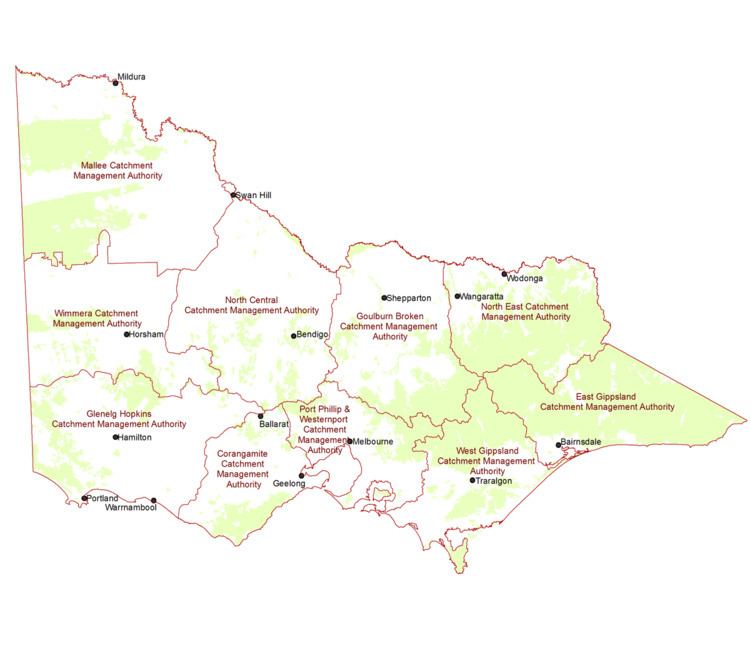 | ||
The Catchment Management Authorities (CMAs) were established in Victoria, Catchment and Land Protection Act 1994. Originally known as Catchment and Land Protection Boards, the CMAs were changed to their present name in 1997.
Catchment management authorities are unique because the area they govern corresponds to the naturally occurring drainage basins, enabling integrated catchment management.
There are 10 CMAs covering the whole of Victoria:
Every 5 years the CMAs are required under Section 12 of the Act, to produce a regional catchment strategy. A regional catchment strategy is a statement of how the CMA plans to manage its region over the coming 5 years and is developed with the principles of integrated catchment management. It should cover the condition of the land and water, assess land degradation and prioritise areas for attention, set out a program of works to be undertaken and who will be undertaking the works, specify how the works and land and water condition will be monitored and provide for review of the strategy. The regional catchment strategy can also undertake to provide incentives to landholders, educational programs, research and other services.
